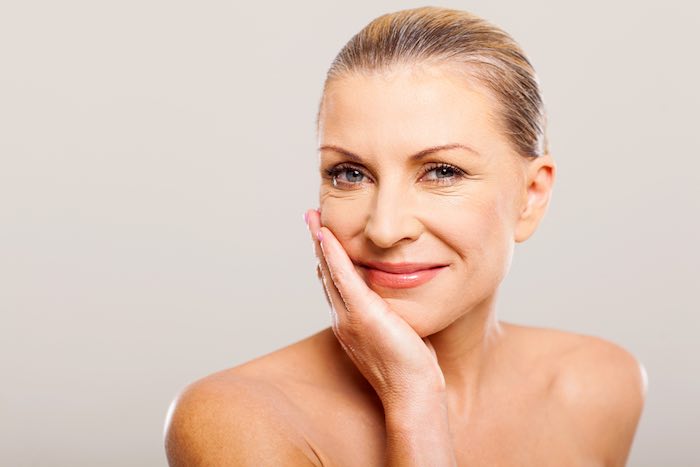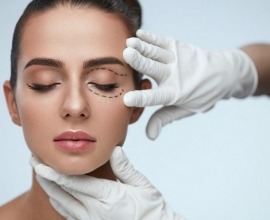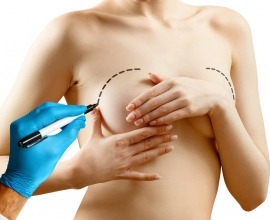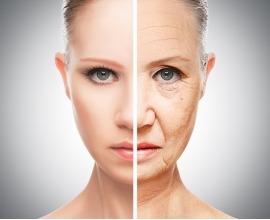Fat and Anatomy of the Aging Cheek
When we talk of “signs of aging” and all its associated features that we bring up in conversations time and time again, we often groan about deepening wrinkles, sagging skin or the need to go out and buy a collagen plumping moisturizer for under the eyes because otherwise you’ll look tired all the time. Sound familiar? Well, strap your boots on tighter because there is even more to discover about the face: fat. In fact, the role of cheek fat and its contribution to younger or older-looking appearances is now a hot topic of discussion in current research.[1]
What happens to our faces as we age?
Skin ages over the years in a similar way as you might stretch and mold clay to create a sculpture. Collagen and acids within the skin keep cells hydrated and elastic while you are youthful and fresh, but years of laughing, sun exposure and gravity itself will mold and harden your facial features into a new position. As time progresses, these particular scenarios occur:
-
Collagen levels decrease
-
Collagen fibers develop new histological characteristics; i.e., redistribution, density, volume and angle changes
-
Ultrastructural collagen network disorganization
-
Fragmentation of fibrils and reduced fibroblast strength leads to higher oxidant levels in the skin and further degeneration, delayed wound healing, reduced blood flow, propensity to bruise, and thin skin
-
Facial muscles become tense and atrophic
-
Facial features sag and droop
-
Fat pads drift apart
-
Fat pads lose density and contribute to an unflattering contour
-
Fat accumulation may lead to permanent puffiness [2][3]

So, in a nutshell, you may think of aging as a cyclical cycle of structural rearrangements going on “behind the scenes” so to speak. A youthful face has evenly distributed, plump fat pockets but age makes them lose volume, clump up and shift downwards, leaving formerly built areas thin and other areas extra puffy.[4]
All about the deep and superficial fat pockets
The main age-related structural augmentations that occur in the face actually differ between superficial and deep fat pockets, which has been uniquely confirmed by cadaver dissections and recent scientific literature. Changes take place in these ways within the outermost superficial fat pockets:
-
Medial cheek and nasolabial fat both increase volume in the lower two thirds, causing a triangular folding look at the corners of our mouth that we commonly refer to as laugh lines.
-
Middle cheek fat accumulates and creates a convex area in the central portion of the cheek but leaves concave areas above.
-
On the edge of the face near the hairline are lateral temporal-cheek fat pockets, which usually don’t shift as we age.
In deep fat compartments we find different age-related shifts:
-
The deep medial and lateral sections both tend to stay put because of strong connections to underlying tissue, but they deflate and hollow out over time, which causes a chain reaction to occur as eyelid tissue loses its lower supporting fat.
-
The reduced volume in the deep lateral pocket also allows the above pockets in the cheekbone area to lose their prominence and lift.
-
Lower volume in the extensively spread out, deep buccal fat also allows medial and middle cheek fat to sag and hang from the jowls.
If I want a facelift, what should I expect?
Facelift surgeons will remove excess skin as well as fat tissue in order to sculpt the contours of your face back to its youthful proportions. As our skin loses elasticity, bones flatten out and fat density shifts, so bringing the face back in time not only requires lifting, but rebuilding the skin’s underlying structure that fat pockets provide.
Our surgeons combine reasonable prices and quality care to maximize the happiness and comfort of our customers while with us. Set up your first consultation today.
[1] Fundarò , Salvatore, et al. “Anatomy and Aging of Cheek Fat Compartments.” Open Access Text, 10 Oct. 2018, doi: 10.15761/MDR.1000111.
[2] Fisher, Gary J., et al. “Collagen Fragmentation Promotes Oxidative Stress and Elevates Matrix Metalloproteinase-1 in Fibroblasts in Aged Human Skin.” The American Journal of Pathology, vol. 174, no. 1, Jan. 2009, pp. 101–114., doi:10.2353/ajpath.2009.080599.
[3] Sifaki, Maria, et al. “A Novel Approach Regarding the Anti-Aging of Facial Skin through Collagen Reorganization.” Experimental and Therapeutic Medicine, vol. 19, no. 1, 27 Nov. 2019, pp. 717–721., doi:10.3892/etm.2019.8254.
[4] “Why Your Face Ages and What You Can Do.” Harvard Health Publishing, Harvard University, www.health.harvard.edu/staying-healthy/why-your-face-ages-and-what-you-c....
[5] Fundarò, et al., Ibid.














